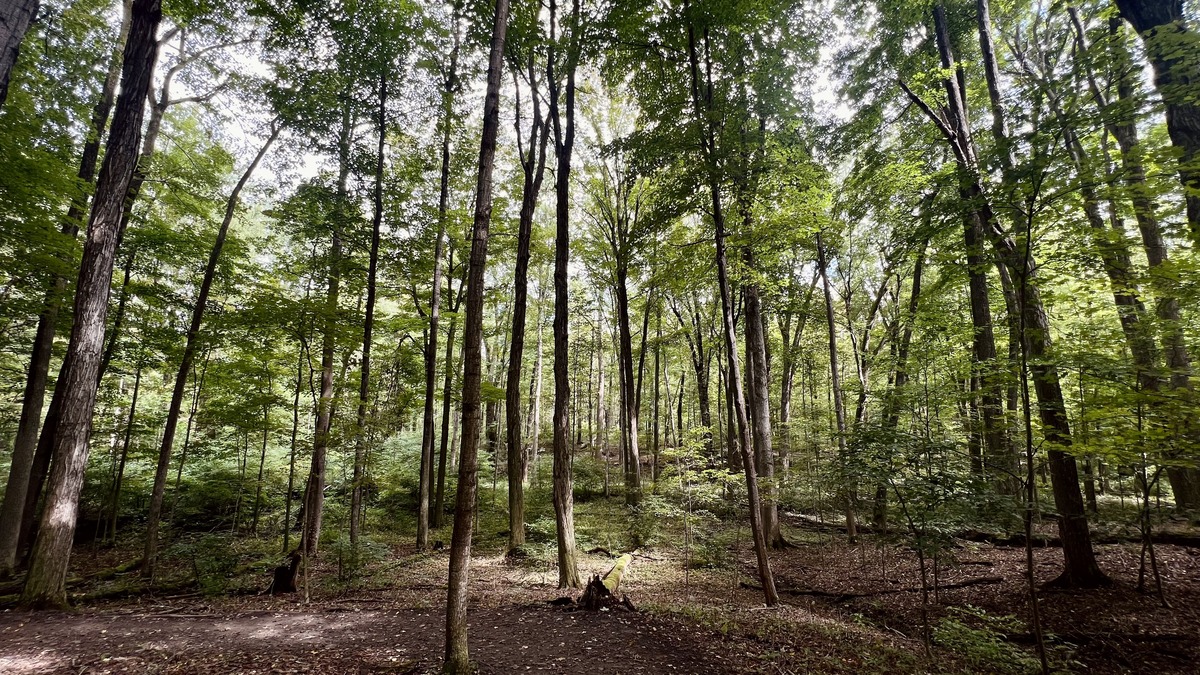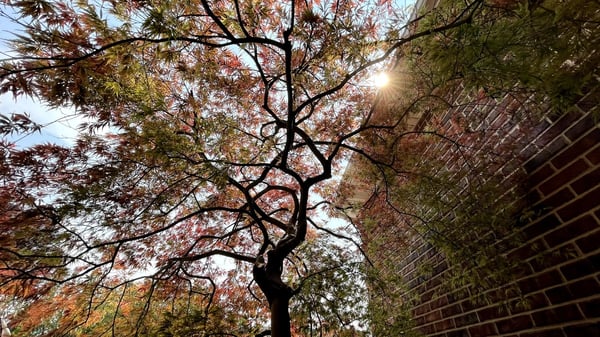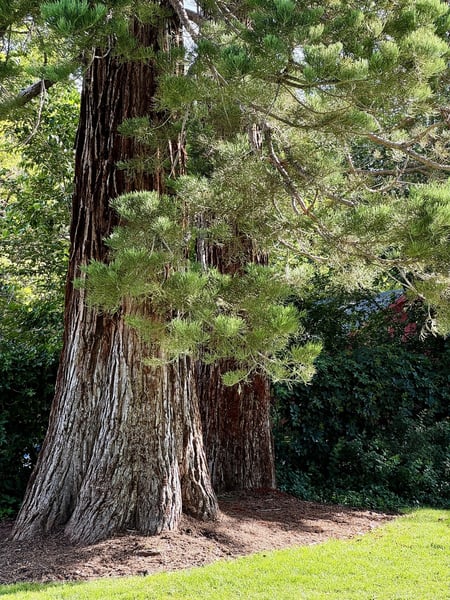
Canopy Diversity in an Urban Forest

 Across the West, urban foresters are facing a pivotal moment. Aging tree populations, climate stress, and recurring pest and disease outbreaks are forcing cities to rethink how they manage and rebuild their urban forests. The familiar maples, ashes, and elms that once defined our streetscapes can no longer carry the canopy alone.
Across the West, urban foresters are facing a pivotal moment. Aging tree populations, climate stress, and recurring pest and disease outbreaks are forcing cities to rethink how they manage and rebuild their urban forests. The familiar maples, ashes, and elms that once defined our streetscapes can no longer carry the canopy alone.
The solution isn’t just planting more trees; it’s planting smarter. Like urban foresters, HOA managers and homeowners can also focus on canopy diversity, allowing communities to create urban forests that are not only beautiful and functional but also resilient to the next generation of challenges.
Quick Links:
- What We Mean by Canopy Diversity in an Urban Forest
- Tree Pests and Disease: What Urban Forests Have Taught Us
- Building a Diverse Urban Forest: Strategies for Success
- The Future of Urban Forests
What We Mean by Canopy Diversity in an Urban Forest
When we talk about canopy diversity in the context of an urban forest, we're referring not just to the number of trees or the amount of leaf cover, but to the variety, structure, and composition of that canopy. In fact, it’s a bit more complex than “plant different trees in different places.”
In practice, it’s about which species, genera, and functional types (e.g., conifers, deciduous, drought-tolerant trees, shrubs, or understory trees) occupy the upper leafy layer over streets, parks, parking lots, and private lots across our cities and towns.
It’s important to understand that canopy diversity is not the same as canopy cover.
Diversity vs. Density
It’s not just how many trees are in the canopy, but how different they are. An urban forest with 40% canopy cover, composed almost entirely of one species, is at much greater risk than one with the same canopy cover but many species. Canopy diversity incorporates two key dimensions:
- Species richness — how many different species are represented
- Species evenness or balance — how evenly the abundance is spread across those species
One of the biggest challenges in urban landscapes is species balance. Often, a few "workhorse" species, usually those that perform well, dominate street tree plantings, while others species are underrepresented. This imbalance can amplify vulnerabilities.
For that reason, urban foresters apply the 10-20-30 rule: no more than 10 % of trees from a single species, 20% a single genus, or 30% a single family. This rule serves as a practical guideline, concisely covering the importance of diversifying your canopy as a preventive strategy.
Functional and Structural Canopy Diversity
Canopy diversity also means including trees that differ in:
- Growth habit and crown form (tall, spreading, columnar, open, dense)
- Biological phenomena (early bloomers, late leaf-drop, etc.)
- Stress tolerance (cold, salt, stress, drought tolerance)
- Pest/disease resistance
- Rooting characteristics, water use, and adaptability to soils
When the goal is to create an urban forest that remains flexible when confronted with varied stressors (drought, storms, shifting climate) and is more capable of offering a blend of services (shade, windbreak, visual interest, wildlife habitat), specific strategies should be implemented. In that case, canopy diversity and a mix of functional goals are the only appropriate solutions.
Spatial scale and neighborhood patterns
Canopy diversity should be considered at multiple scales:
- Block or street scale: A single street with monotonous species is risky.
- Neighborhood or park scale: Clusters of similar species can amplify risk.
- City scale: The entire urban forest is an aggregation and should be viewed holistically.
Often, on streetscapes, especially in neighborhoods, uniformity is the goal. This doesn’t mean planners need to abandon those aesthetic goals. Even if a small street has lower diversity, if the broader neighborhood or city provides a better species mix, the overall urban forest is more resilient. That’s why master plans and inventories at the city scale are critical for guiding tree selection, planting, and replacement strategies.
 Why Canopy Diversity Matters
Why Canopy Diversity Matters
Resistance to pests and diseases
When too many trees are from the same species or genus, pests or pathogens adapted to that group can spread catastrophically. The American elm and green ash losses from Dutch elm disease and emerald ash borer are classic cautionary tales.
In contrast, studies show that in species-rich settings, there’s a verifiable decline in pest destruction as it becomes harder for pests to locate hosts, and natural enemies are better supported. In short, increased canopy diversity translates to fewer pests.
Climate resilience and ecosystem services
As climate challenges arise and change, urban foresters must find a way to fight back. A more diverse canopy helps buffer against climate extremes. While some species may be more drought-tolerant, others may be better prepared to withstand flooding; together, they can help stabilize canopy cover through variability. Mixed canopies also improve carbon sequestration, temperature regulation, and stormwater interception more reliably across varying conditions.
Canopy Continuity
Even with the best laid plans, pests, disease, and other events happen. The goal of a diversified canopy is to ensure that even if you lose 20% of your trees during a pest or disease outbreak, you won’t also lose a disproportionate share of shade, cooling, habitat, or structural stability.
The truth is, recovery periods can take years, especially after widespread destruction. A more diverse urban forest means the canopy can withstand challenges even as individual species may decline or fail.
When we talk about canopy diversity in an urban forest, we mean a species and functionally varied canopy across the entire city landscape. The goal is an urban forest that is not only attractive and useful for shade, windbreaks, privacy, and wildlife, but also resilient to pests, disease, and climate stress.
 Tree Pests and Disease: What Urban Forests Have Taught Us
Tree Pests and Disease: What Urban Forests Have Taught Us
Urban forests across the West, from Colorado and Utah to the Pacific Northwest and Idaho, have taught us a lot about how tree pests and diseases shape canopy health and resilience. These lessons, outlined below, have practical implications for planning, planting, and long-term tree care.
What We’ve Learned
- Monocultures amplify risk
When one species dominates an urban forest, the entire system becomes vulnerable. The devastation caused by tree pests and diseases, such as the emerald ash borer and Dutch elm disease, shows how quickly pests or pathogens can erase decades of canopy growth. These losses aren’t just aesthetic; they reduce shade, stormwater control, habitat, and property values. - Urban stress makes trees more susceptible to pests/disease
Compacted soils, heat, and irregular watering weaken trees, leaving them more prone to pests and pathogens. Research shows that stressed trees experience faster decline when attacked, compounding losses across city landscapes. - Climate change is rewriting the existing pest playbook
Warmer winters and longer growing seasons brought on by climate change are expanding pest ranges and changing life cycles, complicating preventative measures and existing strategies. Further, urban heat islands add additional stress to urban trees, creating ideal conditions for outbreaks, sometimes in places we may not have seen them before. - Diverse canopies improve recovery
Cities that emphasize canopy diversity and monitor regularly fare better after outbreaks. A mix of species slows pest spread, maintains shade and cooling, and supports faster ecological recovery. - Mature canopy loss has long-term costs
As any region that has experienced significant tree loss can tell you, losing mature street trees sets a city back decades, in terms of tree growth and financial costs for tree removal and replacement. Often, it takes years, if not decades, to rebuild the same level of shade, carbon capture, and visual character as mature trees provide.
In reality, canopy diversity is our best defense against pest and disease threats, especially in urban forests. Planting a wider range of urban trees, conducting tree inventories, and consistent monitoring can help city forestry teams build canopy systems that resist outbreaks, recover faster, and continue to deliver shade, beauty, and ecological function for decades.
Building a Diverse Urban Forest: Strategies for Success
For many city forestry teams, creating and maintaining a resilient, thriving urban forest isn’t about planting more trees; it’s about planting the right mix of trees. For urban foresters and even HOA managers, that means taking a strategic approach that values canopy diversity at every level: species, structure, age, and geography.
Here are a few key strategies that can help you achieve the kind of canopy diversity that reaps rewards:
1. Plan for diversity intentionally, not by accident
In forests and woodlands, canopy diversity often happens naturally. For urban foresters, canopy diversity should be a defined goal within every urban forestry plan or landscape guideline. Diversity benchmarks such as the 10–20–30 rule can help. Urban forests that use tree inventory data to track these proportions can adjust future planting and replacement plans to meet canopy diversity (and other) goals.
2. Match trees to microclimates and soils
Some species are notoriously resilient. However, not every “tough” species thrives everywhere. In cities across Colorado, Utah, and the PNW, small shifts in soil texture, drainage, elevation, or exposure can dramatically affect tree health.
Select species adapted to local conditions, such as drought-tolerant oaks, cold-hardy maples, or low-water ornamentals. Overall, this can help reduce long-term stress and pest susceptibility.
This site-specific approach can help cities build both ecological and functional diversity, which will improve canopy performance. Working with a local wholesale tree nursery can help ensure you’re planting trees that are well-adapted to your region and help select the right species for different locations.
3. Mix function and form
A truly diverse urban forest includes trees that vary in:
- Mature size (large shade trees, mid-story, and understory species)
- Leaf type and canopy form (deciduous, evergreen, broadleaf, conifer)
- Phenology (fall foliage and fall timing)
- Growth rate and lifespan
4. Think beyond planting and plan for longevity
Diversity without maintenance isn’t enough. Routine pruning, proper watering (especially in winter), pest monitoring, and soil care protect the investment in canopy diversity. Healthy, well-maintained trees are more resistant to both tree pests and tree diseases, extending the life of the urban forest and delaying costly replacements.
5. Engage communities and HOAs in long-term stewardship
Many neighborhoods and HOAs still favor uniform tree lines for aesthetic reasons. Educating communities about why visual variety equals urban forest resilience helps shift those preferences. Encourage diversity in replacement lists, promote climate-adapted species (natives and cultivars), and involve residents in monitoring and maintenance programs.
When the community not only understands the dangers and costs of monocultures but also sees canopy diversity as part of their environmental identity, it becomes easier to sustain over generations.
A thriving urban forest is more than a collection of trees; it’s a living network. Building structural, species, and functional diversity into every planting decision can help cities and communities create landscapes that are more resistant to pests and are more capable of weathering the unexpected. Best part? They’ll continue to deliver beauty, shade, and ecological value for decades to come.
 The Future of Urban Forests
The Future of Urban Forests
The future of our urban forests depends on the choices we make today, from what we plant and how we plan to who we partner with. Building and sustaining canopy diversity isn’t a one-time effort; it’s an ongoing collaboration among city foresters, HOA managers, and the nurseries that supply their landscaping trees.
As communities across the West, from the Front Range to the Wasatch, from the Snake River Valley to the coastal PNW, adapt to climate change, pest pressures, and water constraints, urban forests must be guided by expertise, not guesswork. That’s where partnering with the right nursery makes all the difference.
Local, Knowledge-Driven Nursery Partnerships Matter
- Regional experience matters
Local, wholesale nurseries understand the growing conditions, soils, and climate challenges unique to western landscapes. They know which species thrive in alkaline Colorado soils, which endure Idaho’s dry summers, and which handle the PNW’s wet winters. Working with local experts ensures your urban forest plan is rooted in success, not trial and error. For over 50 years, SuperTrees has provided this regional experience. - Certified arborists provide strategic insight
Certified arborists, like those at SuperTrees, bring a science-based understanding of tree health, site selection, and planting techniques. They can help assess canopy gaps, identify vulnerabilities to tree pests or diseases, and recommend replacements that strengthen long-term canopy diversity. - Tree inventory support builds resilience
Comprehensive tree inventories are vital for tracking urban trees, understanding age and species distribution, and planning replacements that balance the canopy. Partner nurseries with arborists and GIS-informed inventory tools can help cities and HOAs turn raw data into smart planting strategies that meet shade, aesthetics, and resilience goals. - Sourcing quality, regionally grown stock ensures success
Trees grown and acclimated in the same region where they’ll be planted establish faster and live longer. Wholesale nurseries that prioritize healthy, well-rooted stock reduce transplant failure and strengthen the overall health of the urban forest. At SuperTrees, we use air pruning technology to ensure our trees have a strong foundation, and your trees establish quickly and grow strong.
The reality is that tomorrow’s urban forests will need to withstand more heat, more pests, and more uncertainty. But, with the right strategy and partners, they’ll also offer more beauty, shade, and biodiversity than ever before.
SuperTrees is proud to support municipalities, HOAs, and landscape professionals throughout the West with regionally grown, resilient tree stock and the expertise of certified arborists who understand both the science and the art of canopy diversity.
Contact SuperTrees today to connect with our nursery teams across the West and start building a stronger, healthier, and more diverse urban forest for the future.


